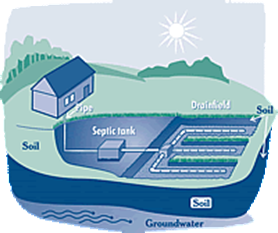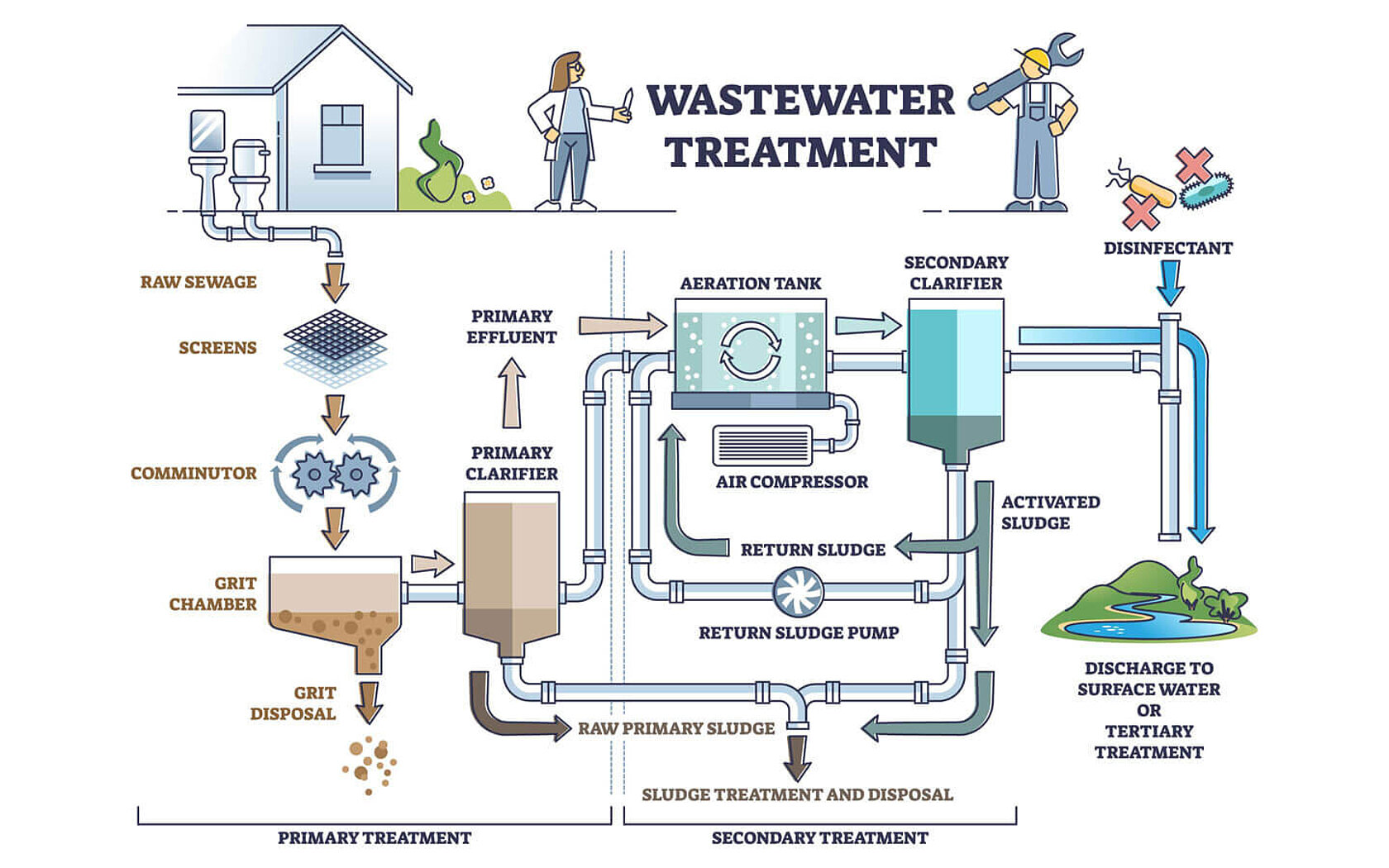Best Practices for Wastewater System Running Smoothly
Best Practices for Wastewater System Running Smoothly
Blog Article
Check Out the Different Kinds Of Wastewater System Suitable for Diverse Requirements
The exploration of wastewater systems exposes a range of remedies tailored to fulfill different ecological and operational demands. Central treatment systems offer urban facilities effectively, while decentralized alternatives offer country communities with lasting alternatives. Industrial applications require specialized techniques, concentrating on pre-treatment and recycling. The surge of innovative innovations, such as membrane layer bioreactors, hints at a transformative change towards source efficiency. Comprehending these varied systems not just highlights their specific values but likewise elevates inquiries regarding their lasting implications for sustainability and facilities strength. What, after that, are the most important challenges and chances within this progressing landscape?
Summary of Wastewater Solution
Wastewater systems play a vital duty in taking care of the water that is made use of and thrown out by families, sectors, and municipalities. These systems are designed to accumulate, treat, and discharge wastewater safely, guaranteeing environmental management and public wellness. The complexity of wastewater systems emerges from the varied sources of wastewater, which can include residential sewage, commercial effluents, and stormwater drainage.
The essential components of wastewater systems consist of collection networks, treatment centers, and disposal methods. Collection networks include pipelines and pumping stations that transport wastewater from its resource to therapy facilities. Therapy centers then refine the wastewater through physical, chemical, and organic techniques to remove pollutants before it is launched back into the environment or recycled for different applications.
The layout and operation of wastewater systems have to take into consideration aspects such as populace density, regulatory requirements, and environmental influence. Furthermore, innovations in innovation are resulting in the growth of a lot more lasting and reliable wastewater administration practices. In general, reliable wastewater systems are vital for keeping water high quality, conserving water resources, and advertising public health in neighborhoods globally.

Centralized Treatment Systems
Central therapy systems are necessary elements of contemporary wastewater management, properly managing huge quantities of wastewater generated by commercial activities and metropolitan populations. These systems typically include a network of collection pipes, treatment plants, and discharge outlets, designed to deal with wastewater before it is launched back into the setting.
Central systems are most appropriate for largely inhabited areas where the concentration of wastewater demands a large-scale feedback. The primary advantage of such systems is their ability to offer consistent treatment requirements, making certain that effluent fulfills regulative needs before discharge. Additionally, centralized treatment facilities commonly incorporate sophisticated innovations, such as biological therapy procedures, filtration, and disinfection techniques, boosting the high quality of treated water.
Operational effectiveness is one more essential advantage, as economies of range enable decreased per-unit therapy prices compared to decentralized alternatives - Wastewater System. Nevertheless, centralized systems also encounter obstacles, consisting of the requirement for significant framework investment, prospective ecological impacts from big discharge quantities, and susceptability to system failings that can interfere with service for whole communities.
Decentralized Therapy Alternatives
Decentralized treatment alternatives supply a versatile and sustainable alternative to streamlined systems, specifically in rural or less largely inhabited areas. These systems are created to deal with wastewater near to the source of generation, minimizing the requirement for substantial piping infrastructure and minimizing transport prices. Usual decentralized modern technologies include septic systems, constructed wetlands, and aerated lagoons, each tailored to satisfy particular local conditions and therapy requirements.
Septic systems, for example, are extensively made use of for specific homes, efficiently separating solids and fluids while allowing natural purification via the dirt. Built wetlands simulate all-natural procedures, offering efficient therapy with vegetation and microbial task, making them an eco pleasant choice. Aerated lagoons utilize aeration to advertise microbial degradation of natural matter, ideal for larger neighborhoods or collections of homes.
Decentralized systems also give durability versus important source infrastructure failings typically linked with central systems, permitting communities to keep wastewater management even throughout unfavorable problems. In addition, they can be integrated with water reuse methods, promoting sustainability and minimizing fresh water need. Hence, decentralized treatment alternatives provide a sensible solution for diverse wastewater administration needs, improving environmental defense and community well-being.
Industrial Wastewater Solutions
Efficient administration of commercial wastewater is crucial for lessening the ecological effect of making processes and guaranteeing compliance with regulatory criteria. Industries generate varying sorts of wastewater, typically containing harmful chemicals, heavy metals, and natural toxins, necessitating customized therapy remedies.
One common approach to commercial wastewater monitoring entails pre-treatment procedures, which may include sedimentation, screening, and neutralization to eliminate huge solids and adjust pH degrees. Complying with pre-treatment, biological treatment techniques such as triggered sludge or biofilm activators can effectively reduce organic web content and nutrients. For certain sectors, progressed oxidation or membrane filtration methods may be used to attend to more intricate pollutants.

Compliance with regional, state, and government policies is vital throughout this procedure. Normal surveillance and reporting are necessary to make sure that therapy systems run successfully and meet the required standards. In summary, tactical planning and robust treatment innovations are essential in taking care of commercial wastewater effectively, safeguarding both the setting and public health.
Sustainable and Cutting-edge Technologies
Developments in innovative and lasting innovations are improving the landscape of wastewater management, building upon the foundational methods developed in industrial wastewater solutions. Emerging techniques such as membrane layer bioreactors (MBRs) and advanced oxidation procedures are improving treatment performance while decreasing environmental impact. MBRs combine organic treatment and membrane layer filtering, allowing for the reliable removal of contaminants and generating high-grade effluent appropriate for numerous reuse applications.
Furthermore, the integration of wise innovations, including Net of Things (IoT) sensors and expert system, allows real-time from this source monitoring and optimization of wastewater therapy procedures. These technologies help with aggressive management, lowering operational costs and power consumption. The fostering of decentralized wastewater treatment systems empowers communities to manage their sources effectively, promoting sustainability at the local degree.
Furthermore, the usage of biotechnological approaches, such as microbial fuel cells, not only deals with wastewater however also generates renewable resource. These technologies highlight the change in the direction of a round economy, where wastewater is checked out as a resource instead of a liability. By welcoming these innovative and sustainable modern technologies, the wastewater industry can substantially add to ecological protection and resilience versus future challenges.
Conclusion
In summary, wastewater systems incorporate a range of services tailored to fulfill unique demands throughout urban, country, and industrial contexts. Collectively, these varied systems play a critical duty in efficient wastewater management and ecological protection.
The intricacy of wastewater systems arises from the varied sources of wastewater, which can consist of domestic sewer, industrial effluents, and stormwater drainage.
The essential components of wastewater systems consist of collection networks, treatment centers, and disposal methods (Wastewater System).Decentralized systems additionally provide strength against facilities failings commonly associated with central systems, allowing areas to maintain wastewater monitoring even throughout adverse problems.Developments in cutting-edge and sustainable innovations are improving the landscape of wastewater administration, structure upon the foundational methods developed in industrial wastewater options. The fostering of decentralized wastewater therapy systems empowers neighborhoods to handle their resources efficiently, advertising sustainability at the neighborhood level
Report this page